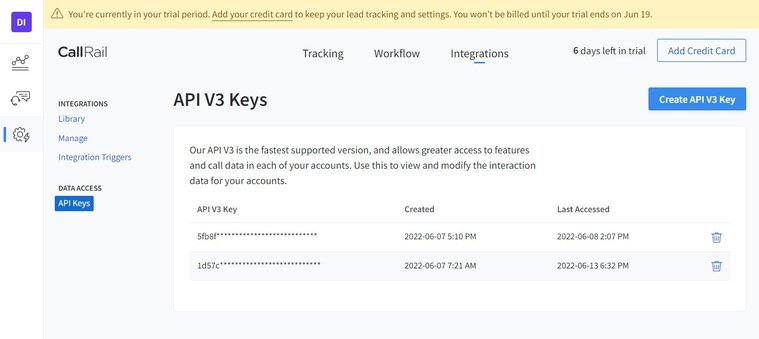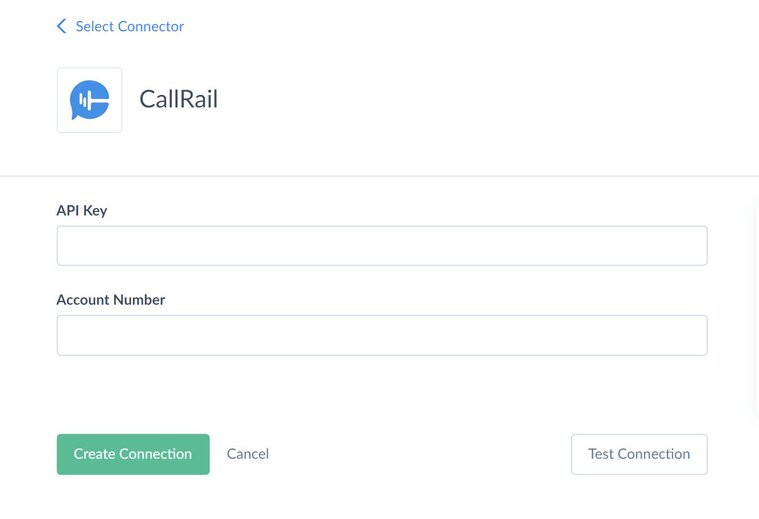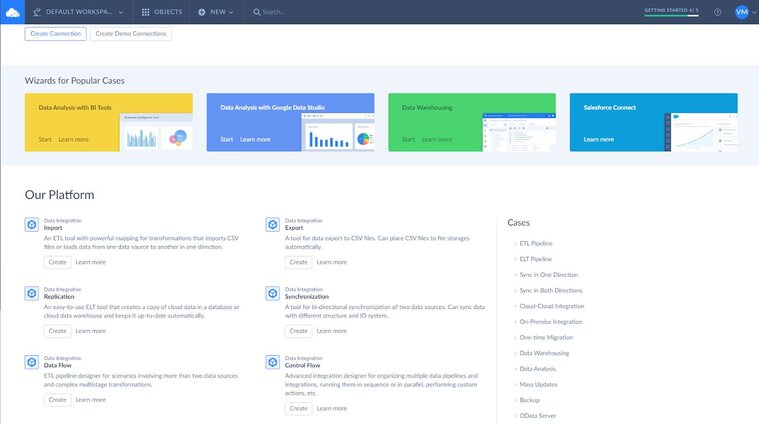Believe it or not, human intelligence is no longer enough to create and support smart marketing campaigns. Many companies already implement various artificial intelligence (AI) tools into their workflow, so you must consider incorporating them in your business and marketing activities to stay ahead of the curve.
Modern AI technologies even go beyond the human mind, especially regarding information processing speed. This becomes a significant value for gaining advanced insights.
This article focuses on the role of AI in modern marketing strategies and explains how companies can take advantage of it. In particular, it discusses the CallRail software and its power to drive powerful insights for marketers. Also, this article explains how Skyvia, as a data integration tool combined with CallRail, offers a 360-degree view of marketing performance.
The power of AI in modern marketing strategies
Modern technologies, including AI, help marketers personalize customer experiences, get a better overview of the campaign performance, and develop products that match customer expectations. Overall, around one-third of all companies worldwide report using AI, and half of them state that implementing AI technologies in marketing results in cost savings.
As AI has constantly evolved, new ways of applying it in marketing and business have also appeared. Here, we’ll provide an overview of the most popular and widely implemented AI technologies in 2024.
Social media listening
With the constant influx of information on social media platforms, the relentless pace can make analyzing it a daunting task for the human mind.
First, specific algorithms are used for semantic analysis of the text. Then, AI comes into play by applying aspect-clustering algorithms to extract the most relevant details from social media listening.
With these tools, marketers can stay informed of the most recent trends in social media in real-time. Semantic analysis, together with AI, helps businesses discover valuable insights about the audience and their interests.
Content creation
A well-known AI tool, ChatGPT, is widely utilized in marketing for its effectiveness in content generation and strategizing. Marketers use the OpenAI platform to generate ideas for social media, blogs, and emails, enhancing audience engagement throughout the sales funnel and bolstering interest in the product.
In addition, marketers can use AI to spot keywords and phrases customers commonly use in conversations. Incorporating these key phrases make the posts and emails more relatable and engaging, thus improving the chances of conversion.
Automation
Nowadays, tools for automating marketing campaigns are used in almost every company. Marketers automate mailing lists, social media posts, YouTube video releases, etc.
In this case, AI helps define the best times to send emails or post on social media platforms. Such technologies are usually already embedded in popular marketing automation tools, though they might cost extra.
Predictive analysis
Machine learning (ML) algorithms take responsibility for helping marketers outline current trends and predict future tendencies. Such technologies operate on huge amounts of data to achieve desired results.
Very often, dedicated business intelligence (BI) tools are needed to perform complex analyses with AI and ML technologies. However, some individual marketing tools have embedded functionality for smart analysis, powerful enough to drive improvement.
CallRail: Revolutionizing lead tracking with AI
One such smart marketing tool that provides incredible insights is CallRail. This service was initially designed for tracking calls, chats, and forms. As CallRail keeps up with the times, its developers have implemented AI technologies for call tracking, automated lead qualification, and conversation analysis.
CallRail offers the AI-powered feature named Conversation Intelligence® that:
- Transcribes inbound and outbound calls and then analyzes them with nearly human-level accuracy.
- Summarizes any calls and provides a 2-3 sentence description with the key points, saving hours of human work.
- Spots and highlights keywords, which helps to improve the bidding strategy and understand what sources drive most leads.
- Automatically qualify leads, which tremendously helps the sales team focus on prospective leads that are very likely to turn into customers.
Combine CallRail with Skyvia to multiply its power and perform quality analysis. Together, they can work miracles and open new horizons for your business.
Skyvia: Simplifying data integration and analytics with AI
Skyvia is a universal cloud data platform designed for a set of data-related tasks, including integration, backup, automation, and querying.
Its flagman product is named Data Integration and contains the following tools:
- Import for loading data to and from cloud applications, relational databases, and data warehouses with the ELT approach.
- Export for extracting data from cloud applications into CSV files.
- Replication for loading bulk data into a data warehouse using the ELT approach.
- Synchronization for aligning data between two systems.
- Data Flow + Control Flow for designing complex data integration pipelines, involving multiple sources and multistage data transformations.
Skyvia has the CallRail connector, which allows users to connect to this tool in seconds. It also supports 180+ other pre-made connectors, including cloud apps, databases, and popular data warehouses, such as Amazon Redshift, Google BigQuery, Snowflake, etc. Data warehouses usually ensure powerful BI features either by providing in-built analytics functionality or by connecting to analytics tools.
Overall, the CallRail Skyvia integration enables marketing and sales teams to:
- Refine advertisement campaigns
- Deliver personalized customer services
- Predict future trends
- Segment contacts
Synergizing CallRail and Skyvia
Skyvia, together with CallRail, enhances data-driven marketing strategies through AI-powered analytics. So, let’s explore in detail how to connect CallRail to Skyvia and replicate its data into a DWH for further processing and analysis.
1. Set up CallRail connector
1. Sign in to your CallRail account.
2. Click Settings in the menu on the left.
3. Click Integrations in the toolbar and go to API Keys.
4. Click Create API V3 Key and copy its value.

5. Log into your Skyvia account.
6. Go to +NEW-> Connector in the upper menu.
7. Choose the CallRail connector from the list.
8. Paste the API key copied during step 4 and your CallRail account number.

2. Configure replication
1. Log into your Skyvia account.

2. Go to +NEW-> Replication in the upper menu.
3. Select CallRail under the source and the data warehouse of your choice as a target.
4. Decide which objects you want to transfer to a DWH.
5. Make sure that the Create Tables option is selected. That way, Skyvia creates all the tables automatically in the destination DWH.
6. Make sure to select Incremental update if you want to send new and updated data from CallRail to a DWH regularly.
7. Click Schedule to set up regular data transfers.
8. Click Create to create the replication package.
9. Click Run to start the integration.
10. Observe the progress in the Monitor tab. Once complete, the integration status turns to Succeed in case of successful integration with the green light on the left.
3. Analytics
Now, it’s time to get smart insights from your CallRail data. To apply analytical functions in a DWH, use the corresponding functions there. For instance, the Analytics Hub in Google BigQuery needs to be activated for further data analysis.
AI-driven marketing success stories
According to an independent study conducted by CallRail, customers report tangible improvements in their marketing performance.
Customers noted:
- 10% increase in leads
- 50% decrease in time spent on call analysis
- 60% less time spent on lead qualification and prioritization
- 20% reduction in cost-per-lead
With the help of AI-driven marketing insights, businesses gain a deeper understanding of their customer behavior and preferences, allowing for more targeted and effective marketing strategies that lead to a higher return on investment.
Conclusion
Many businesses have either already implemented it, or are still considering it. If you’re unsure about AI, the numbers speak for themselves.
For instance, CallRail’s AI-powered tools reduce cost-per-lead, improve lead qualification, drive leads, and minimize time spent analyzing calls. This results in a reduction of human time spent on manual and monotonic tasks.
Together with Skyvia, CallRail goes even further by providing data insights, helping businesses uncover areas for improvement, develop products that align with customer expectations, and stay competitive.







